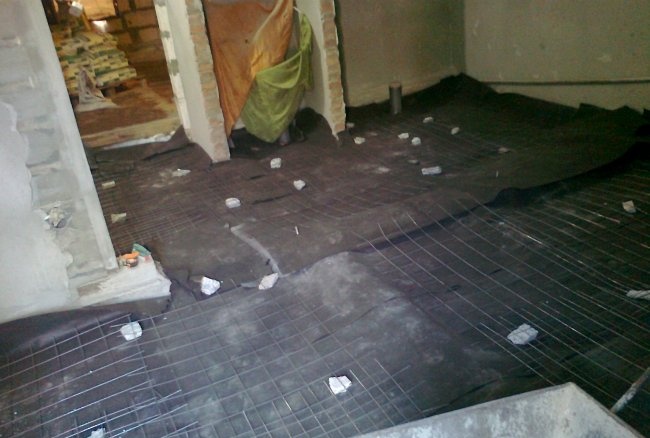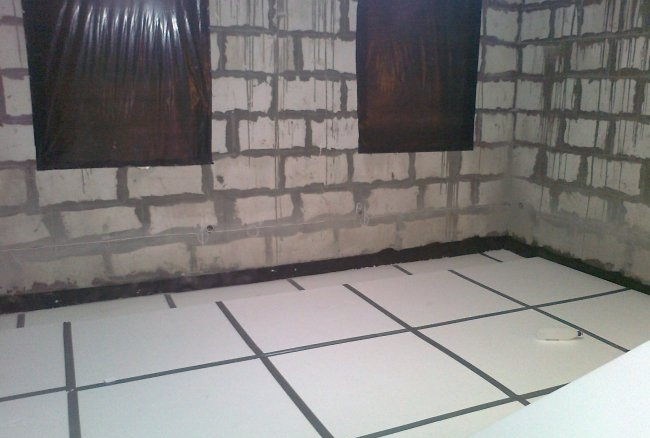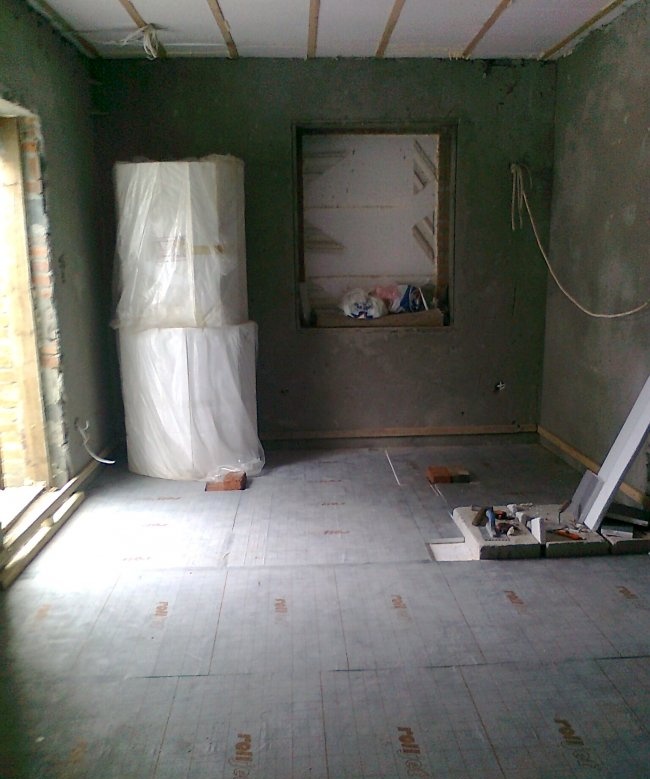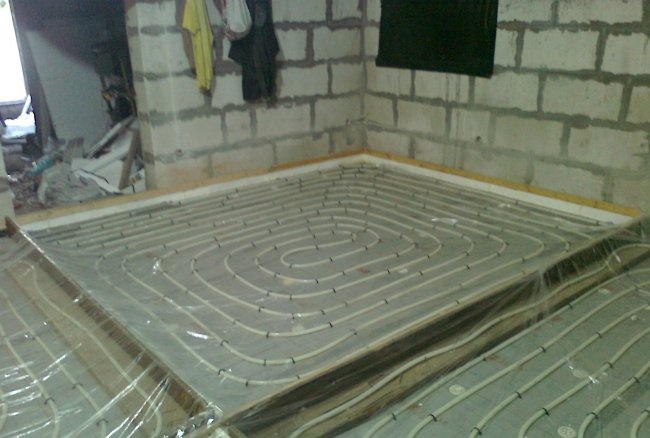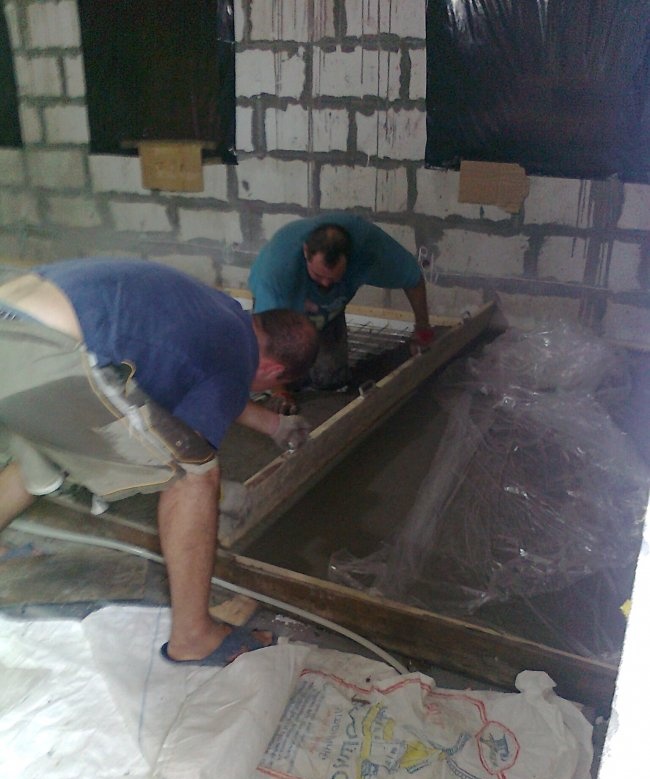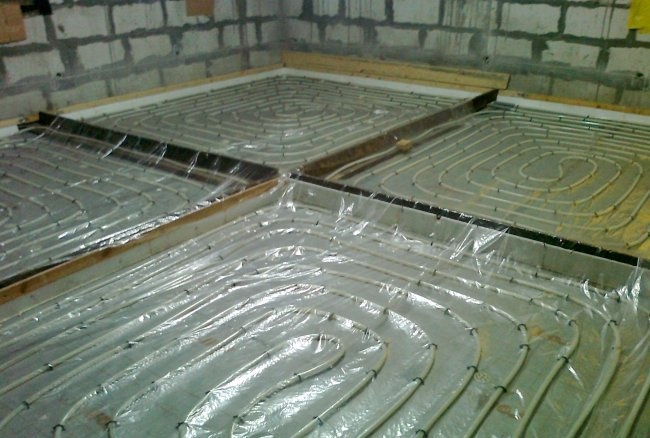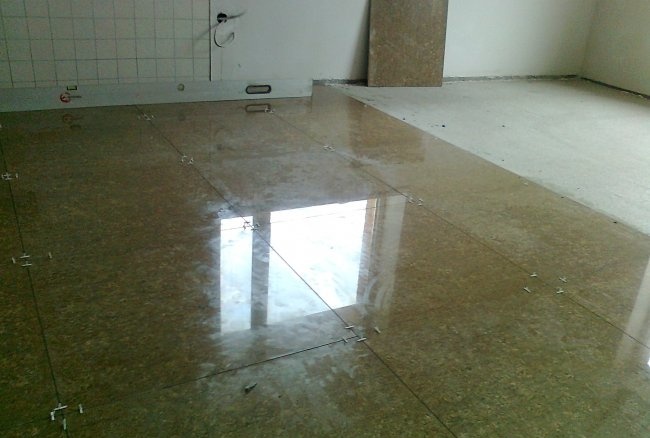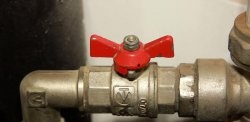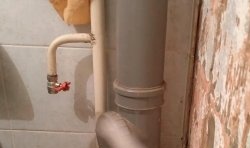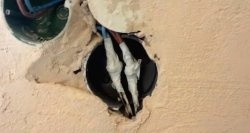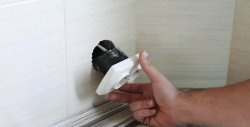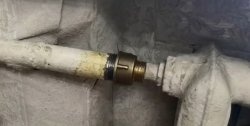High-quality installation of water heated floors
We determine the level of the future floor.
To do this, we introduce the following parameters into our calculations:
So, we have decided on the calculations. We add them and get the figure - 29.5 cm. This is the depth to which you should dig.
Level the surface. To do this, we stretch beacons along the entire perimeter of the excavation. It is best to check the levelness of the ground with a two-meter level. We remove all the dimples and tubercles. We compact the earth.
We cover the floor with roofing felt with an overlap of about 15 cm on the walls. We pay special attention to the corners of the house. The material must fit tightly to the corners, otherwise when pouring the concrete layer there will be thinner.
Masonry mesh 3 mm thick. We lay it over the entire perimeter of the floor. We set the beacons to a height of 7 cm and pour the first layer of concrete.When pouring, be sure to lift the masonry mesh up from the ground by about 3 cm.
After a week or two, you can begin to lay polystyrene foam on the concrete. As we have already said, its thickness is 5 cm and density is 35. We pay special attention to the corners, making sure that the foam fits tightly to them. We place the second layer of polystyrene foam with an offset, in order to bridge the gaps between the foam plastic slabs. The material should fit tightly to the walls of the house. If any gaps remain, they must be filled with foam. The last layer of foam that we are laying is with heat reflectors. It has excellent thermal insulation characteristics.
Polystyrene foam 2 cm thick, cut into strips of 8-10 cm and line the perimeter of the house with them. We foam the joints between the heat reflector and the foam strips. We do not allow any gaps to remain there.
We divide the entire floor area into squares (heating circuits). The size of the squares is 6-8 m². We install beacons for the concrete screed. The space between the squares must be covered with foam.
We lay out the heating tubes so that the distance between them is at least 12 cm. Today, the best option is PE-RT polyethylene grades. Our supply and return pipes run parallel to each other. We fix them with special pins.
Step 8. We make a concrete screed on the laid pipes. Its thickness should be at least 7 cm. Add fiber to the concrete mixture for better concrete reinforcement. It is better to take crushed stone for concreting in fractions 3-5, and add granot sieving to the mixture instead of sand. Using the tamping method (with a long tamping strip, the edges of which lie on the beacons), carefully pour the concrete.
After finishing the screed, cover the floor with plastic film and water it every day for a month or two.After this, we grind the concrete floor with a grinder and a diamond wheel.
You can start laying tiles. To do this, we purchase special glue for heated floors. The tiles must be laid from the center to the edges. This must be done carefully, slowly, making sure that the tiles adhere well to the concrete. This will ensure good thermal conductivity of the floor. The joints between the intended squares should be covered with silicone. When laying tiles, do not forget to leave a gap of 0.5-1 cm near the walls.
To do this, we introduce the following parameters into our calculations:
- thickness of the floor covering. The best option is tiles. Its thickness is 1.1 - 1.5 cm.
- the layer of glue on which the tile will sit is 1 – 1.5 cm.
- the layer of concrete mortar under the main screed is 6 - 7 cm. If its thickness is less, there is a risk that the concrete will begin to crack.
- additional layer of foam with reflector – 2.5 cm.
- The thickness of the foam layers is 5+5 cm.
- The thickness of the concrete for the rough screed is 7-8 cm.
So, we have decided on the calculations. We add them and get the figure - 29.5 cm. This is the depth to which you should dig.
Level the surface. To do this, we stretch beacons along the entire perimeter of the excavation. It is best to check the levelness of the ground with a two-meter level. We remove all the dimples and tubercles. We compact the earth.
We cover the floor with roofing felt with an overlap of about 15 cm on the walls. We pay special attention to the corners of the house. The material must fit tightly to the corners, otherwise when pouring the concrete layer there will be thinner.
Masonry mesh 3 mm thick. We lay it over the entire perimeter of the floor. We set the beacons to a height of 7 cm and pour the first layer of concrete.When pouring, be sure to lift the masonry mesh up from the ground by about 3 cm.
After a week or two, you can begin to lay polystyrene foam on the concrete. As we have already said, its thickness is 5 cm and density is 35. We pay special attention to the corners, making sure that the foam fits tightly to them. We place the second layer of polystyrene foam with an offset, in order to bridge the gaps between the foam plastic slabs. The material should fit tightly to the walls of the house. If any gaps remain, they must be filled with foam. The last layer of foam that we are laying is with heat reflectors. It has excellent thermal insulation characteristics.
Polystyrene foam 2 cm thick, cut into strips of 8-10 cm and line the perimeter of the house with them. We foam the joints between the heat reflector and the foam strips. We do not allow any gaps to remain there.
We divide the entire floor area into squares (heating circuits). The size of the squares is 6-8 m². We install beacons for the concrete screed. The space between the squares must be covered with foam.
We lay out the heating tubes so that the distance between them is at least 12 cm. Today, the best option is PE-RT polyethylene grades. Our supply and return pipes run parallel to each other. We fix them with special pins.
Step 8. We make a concrete screed on the laid pipes. Its thickness should be at least 7 cm. Add fiber to the concrete mixture for better concrete reinforcement. It is better to take crushed stone for concreting in fractions 3-5, and add granot sieving to the mixture instead of sand. Using the tamping method (with a long tamping strip, the edges of which lie on the beacons), carefully pour the concrete.
After finishing the screed, cover the floor with plastic film and water it every day for a month or two.After this, we grind the concrete floor with a grinder and a diamond wheel.
You can start laying tiles. To do this, we purchase special glue for heated floors. The tiles must be laid from the center to the edges. This must be done carefully, slowly, making sure that the tiles adhere well to the concrete. This will ensure good thermal conductivity of the floor. The joints between the intended squares should be covered with silicone. When laying tiles, do not forget to leave a gap of 0.5-1 cm near the walls.
Similar master classes
Particularly interesting
Comments (3)

